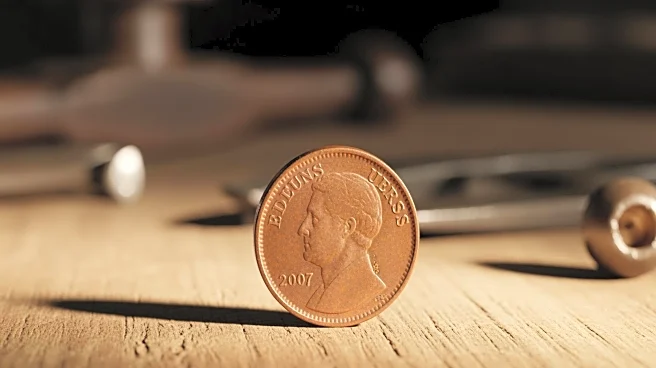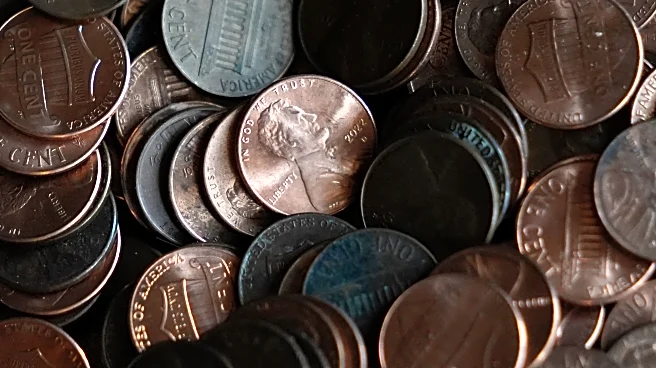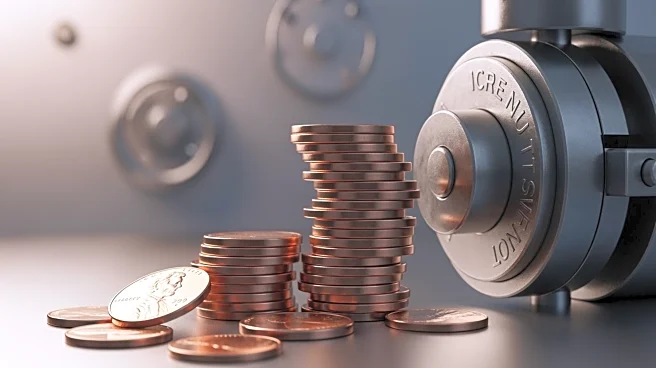What's Happening?
The U.S. Mint has ceased production of the penny, marking the end of over 230 years of circulation. The decision was driven by financial considerations, as the cost of producing a penny has risen to 3.69
cents, resulting in a loss of $85.3 million in fiscal year 2024. The final pennies were minted in Philadelphia and will be auctioned rather than circulated. President Trump had previously announced the intention to stop penny production, citing wasteful spending. Despite the discontinuation, existing pennies remain legal tender, with over 300 billion still in circulation.
Why It's Important?
The discontinuation of the penny reflects broader economic shifts and the modernization of currency systems. It highlights the government's efforts to reduce unnecessary expenditures and streamline fiscal operations. The move may influence consumer behavior, as transactions adjust to the absence of the penny, potentially impacting pricing strategies and cash handling practices. Additionally, it raises questions about the future of other low-denomination coins and the role of physical currency in an increasingly digital economy.
Beyond the Headlines
The decision to end penny production may have cultural implications, as the penny has been a staple of American currency and tradition. Its absence could affect charitable activities that rely on penny donations and alter the dynamics of cash transactions. The move also prompts discussions on the environmental impact of coin production and the potential benefits of reducing metal usage. As the U.S. adapts to this change, it may pave the way for further innovations in currency design and usage.













